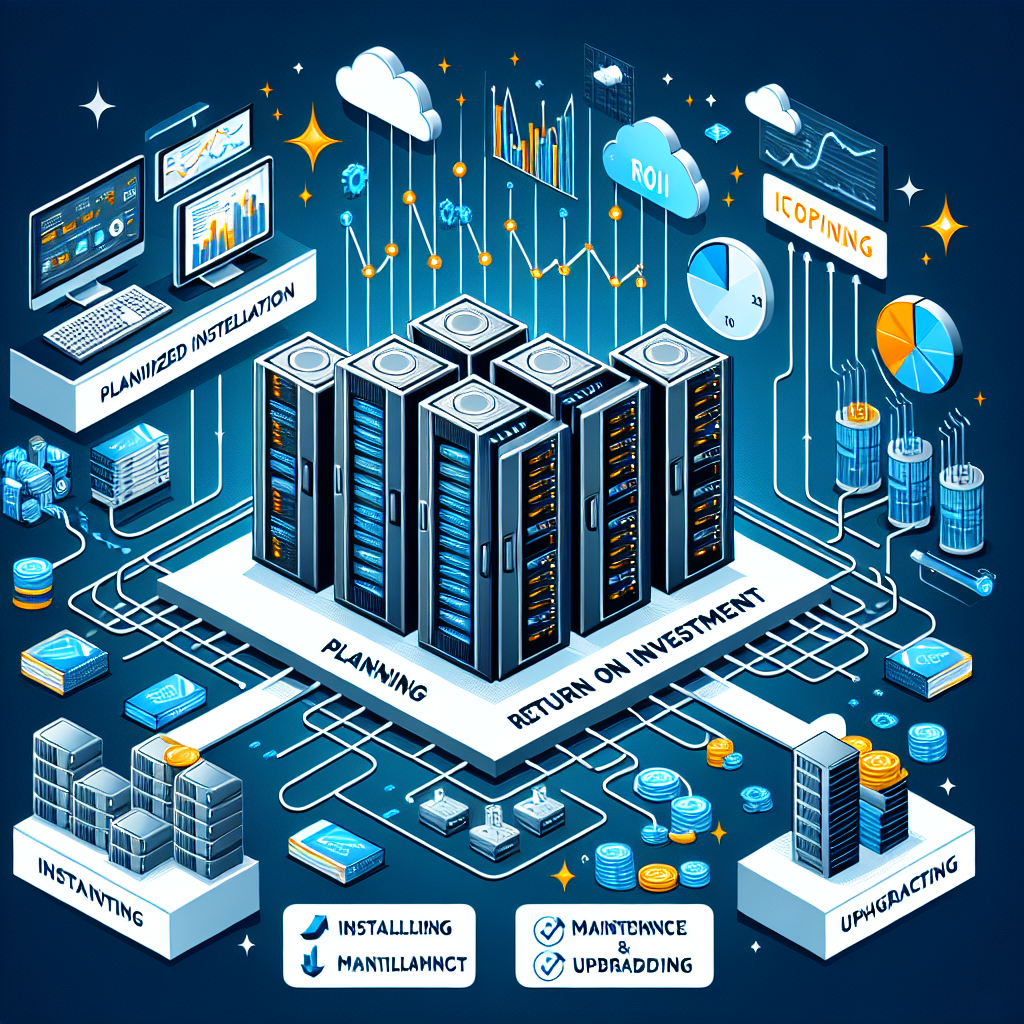Your cart is currently empty!
Maximizing Efficiency and ROI: A Comprehensive Guide to Data Center Lifecycle Management

In today’s digital age, data centers play a crucial role in the functioning of businesses across industries. From storing and managing data to hosting applications and services, data centers are the backbone of modern enterprises. However, managing a data center efficiently can be a complex and challenging task. From planning and design to construction and operation, each phase of a data center’s lifecycle requires careful consideration and strategic decision-making to maximize efficiency and return on investment (ROI).
To help businesses navigate the complexities of data center lifecycle management, we have put together a comprehensive guide that covers key strategies and best practices for optimizing the performance and value of data center infrastructure.
1. Planning and Design: The first step in maximizing efficiency and ROI in data center lifecycle management is to carefully plan and design the infrastructure. This involves assessing current and future business needs, determining the optimal size and capacity of the data center, and selecting the right technology and equipment. By taking a holistic approach to planning and design, businesses can ensure that their data center meets their performance, scalability, and cost requirements.
2. Construction and Implementation: Once the planning and design phase is complete, the next step is to build and implement the data center infrastructure. This involves coordinating with vendors, contractors, and other stakeholders to ensure that the construction process is completed on time and within budget. It is important to closely monitor the construction progress and quality to avoid delays and cost overruns.
3. Operations and Maintenance: After the data center is up and running, the focus shifts to operations and maintenance. This includes monitoring and managing the performance of the infrastructure, conducting regular maintenance and upgrades, and ensuring that security and compliance requirements are met. By implementing proactive monitoring and maintenance practices, businesses can minimize downtime and optimize the efficiency of their data center operations.
4. Optimization and Upgrades: As technology evolves and business needs change, it is important to continually optimize and upgrade the data center infrastructure. This may involve implementing new technologies, upgrading hardware and software, and reconfiguring the layout of the data center to improve efficiency and performance. By staying ahead of the curve and regularly assessing the infrastructure, businesses can ensure that their data center remains competitive and cost-effective.
5. Cost Management and ROI Analysis: Throughout the data center lifecycle, it is important to closely monitor costs and analyze the return on investment. By tracking expenses, identifying cost-saving opportunities, and measuring the performance of the infrastructure, businesses can make informed decisions that maximize ROI and drive business value. It is also important to regularly review and update the data center strategy to align with business goals and objectives.
In conclusion, data center lifecycle management is a complex and multifaceted process that requires careful planning, strategic decision-making, and ongoing optimization. By following the strategies and best practices outlined in this guide, businesses can maximize the efficiency and ROI of their data center infrastructure, driving business success and growth in an increasingly digital world.

Leave a Reply